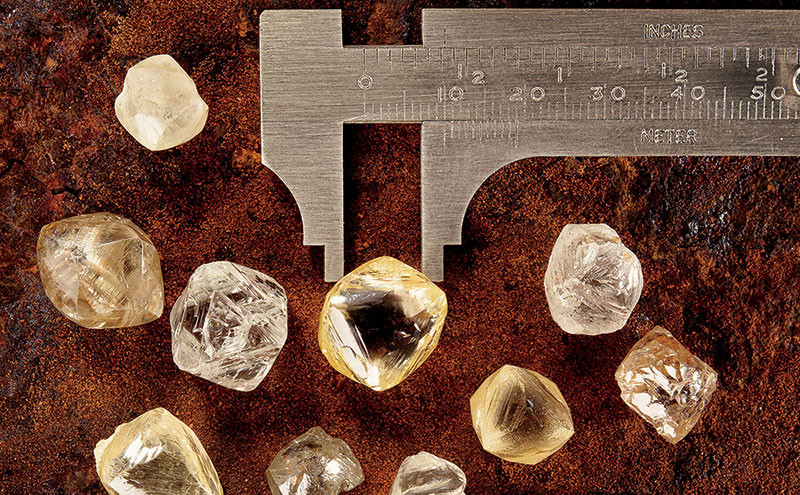A team of geologists led by Yaakov Weiss of Columbia’s Lamont-Doherty Earth Observatory have developed a new way to date and chemically profile diamonds, a breakthrough that could help scientists answer fundamental questions about our planet’s early history, the creation of the continents, and geological processes that continue to unfold today.
Diamonds, which form one hundred miles or so below ground and are then brought to the surface by volcanic activity, have long been scrutinized by scientists for clues about what lies below us deep in the earth. But they hold their secrets tightly. Crystals cannot be dated using radioactive-decay techniques, because they are made of pure carbon, which is chemically inert. Scientists have therefore resorted to dating tiny flecks of more reactive minerals, like garnet or zircon, which are sometimes encased within diamonds. But this strategy is imperfect, because scientists have no way of knowing if the baked-in minerals formed long before the diamonds did.
So Weiss and his colleagues devised a better method: they extract and analyze small droplets of liquid preserved within lesser-quality diamonds. “Diamonds form when liquefied elements crystallize, and some diamonds still have little pockets of that same fluid trapped inside of them,” Weiss says. “The fluid is the matter out of which the crystal formed. So it’s a perfect time capsule, providing a window directly into the diamond’s origins.”
In a recent issue of the journal Nature Communications, Weiss and his collaborators report the results of their analysis of fluid droplets drawn from ten diamonds found in mines in and around Kimberley, South Africa. The researchers say that they were able not only to determine the diamonds’ ages — the samples ranged from 85 million to 2.6 billion years old — but also to glean valuable insights into the geological processes that were occurring underground when they formed. For example, by assessing the relative amounts of carbonate, silica, and saline present in fluid from individual diamonds, the authors conclude that some of them formed when a giant slab of oceanic crust smashed into, and then dove underneath, the edge of the African continent some hundred million years ago. The study thus provides evidence for an idea that was once considered improbable but which has been gaining currency among scientists: that diamonds may contain carbon recycled from the earth’s surface.
Weiss says that his team’s techniques could be useful to geologists working in other diamond-rich areas of the world, including Australia, Brazil, northern Canada, and northern Russia. They could help disentangle the deep histories of those regions and give a better understanding of our planet’s ongoing evolution. Studying diamonds, he says, could shed light on how geological phenomena on the earth’s surface — the barely perceptible movements of continents, oceans, and mountains, for example — are influenced by turbulence deep underground. “These are really big questions, and it’s going to take people a long time to get at them,” says Weiss. “But hopefully we’ve provided new tools and ideas for figuring out how these things work.”
This article appears in the Fall 2021 print edition of Columbia Magazine with the title "African diamonds may reveal mysteries of the deep earth."



